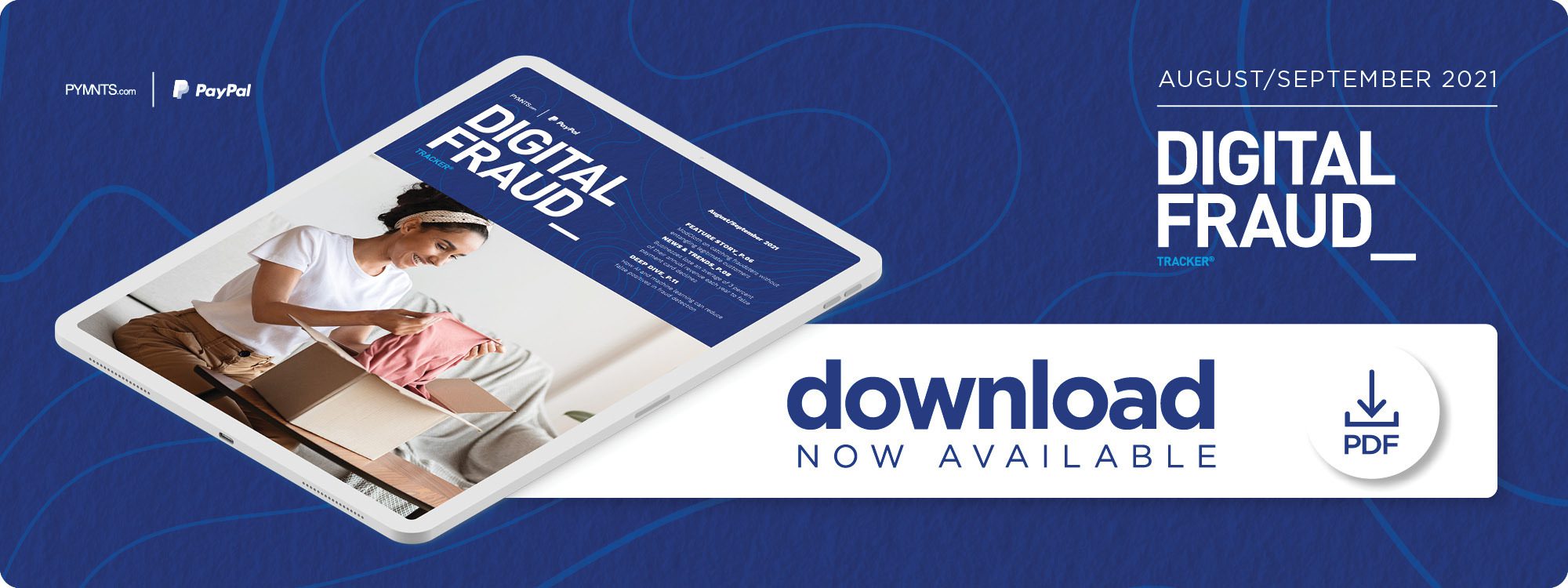ModCloth on Catching Fraudsters Without Entangling Legitimate Customers

Combating fraud is a delicate balancing act for fashion eTailers. If they’re too casual with prevention, fraudsters will strike, but if they’re too stringent, good customers get pushed away. In PYMNTS’ new Digital Fraud Tracker, ModCloth’s Geoff Van Haeren explains how data analysis is striking a balance between predicting good behavior and weeding out the bad.
An estimated 2.1 billion individuals — more than one-quarter of the global population — are expected to purchase goods or services online this year, and projections say this figure will continue to increase. eCommerce is rising with no apparent end in sight, but a parallel surge in fraud is occurring alongside this explosive growth.
Bad actors are leveraging a widening array of fraud tactics, prompting merchants to deploy their own growing arsenals of various countermeasures. Not all methods are alike, however, especially regarding the risk of false positives — the mistaken identification of legitimate customers as fraudsters. This complication can do significant harm to the customer relationship, as indie and vintage clothing brand ModCloth, which was recently acquired by eCommerce provider Nogin, can attest.
Geoff Van Haeren, president of ModCloth’s parent company, told PYMNTS in an interview that failure to eliminate false positives can be devastating, with customer retention, loyalty and checkout conversion all suffering as a result.
“Customers walk away, and they’re not going to come back,” he said. “If it’s a new customer, they’re gone for good, and if it’s an existing customer, that will cause frustration and phone calls, which are an additional cost to the merchant and ultimately lost revenue.”
Van Haeren explained how ModCloth is using artificial intelligence (AI)-powered risk assessment to screen transactions for fraud while keeping false positives to a minimum.
How ModCloth Fights Fraud
The biggest threat ModCloth faces on a regular basis is gift card fraud, Van Haeren said, but the company leverages a risk assessment algorithm to score each transaction for its likelihood of fraud. A multitude of variables are considered when making these calculations.
“There’s different areas of the country, there’s geography, there’s [the range of IP addresses] — we look at all the different components of the transaction,” he said. “Because we compare these variables across all of our clients, we also have the ability to do some blacklisting.”
This risk assessment is augmented by AI- and machine learning (ML)-based systems that perform further analysis on other variables that rules-based systems lack the ability to compute. AI and ML systems also grow smarter over time, improving their fraud-fighting ability with every calculation.
“We look at order velocity by counting the number of transactions put through the system at one time,” Van Haeren said. “These are machine learning models that we’ve built, and some of those models are designed as traps to catch fraudsters [conducting] transactions with the potential for fraud. That model has been learning over the last 10 years or so.”
All fraud prevention systems run the risk of trapping legitimate customers in the same net, however, causing potentially permanent damage to customer conversion and loyalty. ModCloth relies on mining past analyses for data to ensure false positives are kept to a minimum.
“Our goal is we want to get as many people through the checkout process as possible,” Van Haeren said, “but at the same time, we don’t want to do anything negative [to] affect the customer who might have had a credit card stolen. There’s always a balance: How loose are the slots [for legitimate purchases], and how tight is the fraud prevention?”
Avoiding False Positives in Fraud Detection
The best way to avoid false positives in the future is to look to the past for guidance, according to Van Haeren. Past transactions, both legitimate and fraudulent, include critical data from which AI and ML systems can learn so that they make more educated determinations in the future and avoid mistakenly accusing legitimate customers.
“We store every transaction [that] tries to go through the system, and we look at those metrics,” he said. “That’s what the team uses to assess whether or not fraud [detection] is too tight. And then we have data scientists on staff to look at the models to make sure we are making accurate predictions.”
The growing eCommerce boom means that while merchants need fraud detection systems that offer unparalleled protection, it is equally critical to ensure that legitimate customers are not caught up in false accusations. Missing either mark could result in incalculable losses, so companies would do well to invest in systems such as ModCloth’s that can handle both.

